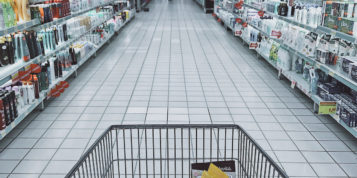Brand safety remains a key concern for advertisers. Almost 60% believe the situation has not improved in the past year and many lay the blame for safety breaches at the door of agency partners.
Major brands from Daimler to Godiva are reviewing their agency contracts and in the future it is expected the vast majority of CMOs will choose agency partners based principally on their ability to prove brand safety and transparency. But it must be acknowledged that all parts of the industry need to take responsibility for ensuring safe placements. Brand advertisers can play their part through open discussions with agencies about the brand safety techniques and technologies they use, as well as the brand’s unique needs and requirements.
Before partnering with or reviewing the activities of an agency, there are three questions all brands should ask:
Question 1: How does your solution protect my individual brand?
Brand safety may sound like a black and white issue – a placement is either safe or unsafe – but this is far from the case, as each brand should have its own unique definition of what is safe. There are some broad categories such as porn and drugs that almost all brands want to avoid, but others are less clear-cut. Alcohol-related content might be a no-go for an automotive manufacturer but perfectly acceptable for a brewery, dependent on the context of course.
Instead of one-size-fits all solutions, agencies should use tools that customise brand safety criteria to consider relevant products, industries, and brand values. This basic level of protection will help brands avoid placing ads around content that is potentially harmful considering its particular industry or organisation. Only once this is in place can a higher level of customisable brand safety be implemented.
Identifying the subject of content is only one part of ensuring brand safety. Agencies should also employ tools to determine the real emotions that content evokes, because negative sentiment towards a brand or industry can exist even where the subject appears harmless. Traditional brand safety tools, such as keyword searches, are unlikely to identify fake news or hate speech, for instance, so agencies need advanced solutions to avoid these types of content.
Question 2: Can you prove the technology works?
Most agencies are using some form of brand safety protection but the effectiveness of many of these technologies is questionable.
Keyword filters – which stop ads being served on a page with certain, pre-identified words – are a common brand safety tool, however the absence of banned keywords does not guarantee that a placement is safe. Blacklists and whitelists, which either stop ads being served on banned sites or restrict placements to a list of pre-approved sites, are also common tactics. However, these don’t assess content on individual webpages meaning ads may still end up alongside damaging content within an assumed ‘safe’ environment.
Brands should encourage agencies to use more advanced AI-based brand safety technologies, such as semantic analysis and natural language processing. These tools read web content at URL level, precisely identifying its context like a human would, as well as the sentiment it evokes – dramatically reducing the risk of ad misplacement.
Questions 3: Will this technology limit my reach?
Some tools limit reach by preventing placements on web pages that, if assessed correctly, would be considered safe and potentially very lucrative. This is common with keyword filters as words often have multiple meanings and, without understanding the context in which they are used, keyword filters generate false positives, deeming suitable ad placements unsafe. Imagine, for instance, an article about an amazing trick shot that wins a high-profile football match. This is prime inventory for a sports brand, but the word ‘shot’ may erroneously prevent a bid being placed if violence-related keywords are filtered.
Blacklists and whitelists also limit reach. Blacklists prevent ads being served on entire websites even when placements on some pages may be desirable and relevant to a brand’s audience. Whitelists are also restrictive, as they must be kept manageable and preclude certain sites, not because they are unsafe but because the brand simply isn’t aware of them or doesn’t have space on the list.
By using more advanced technologies that understand linguistic subtleties and read content as the human brain would, agencies can help brands take full advantage of the many and varied opportunities available for connecting with well-targeted, engaged audiences, without limiting reach.
Brand safety is an enduring issue and an agency’s ability to guarantee safe placements is key in winning brand contracts. But advertisers should play their part by asking agencies these three questions, discussing their brand’s unique requirements, and ensuring the technologies employed to safeguard brand reputation really work without unnecessarily restricting reach.





